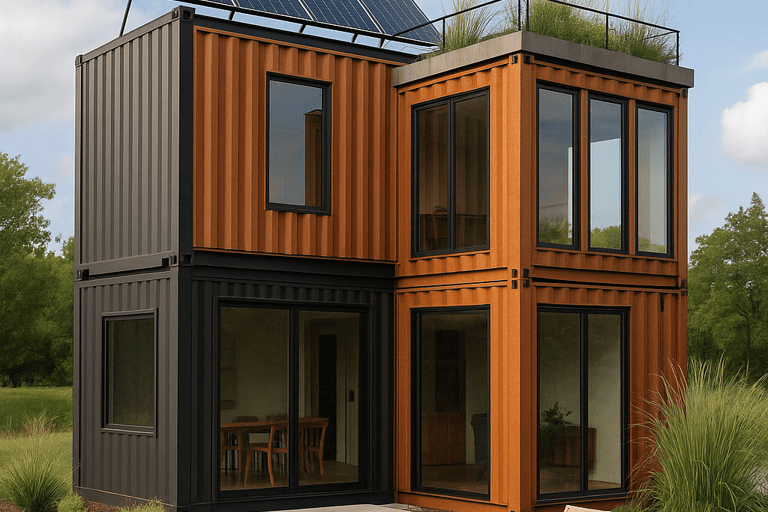Sustainable Architecture with Containers: Energy, Design & a Responsible Future
As climate change accelerates and urban populations grow, sustainable architecture with containers emerges as a transformative solution. Once used for global shipping, these steel modules are now repurposed into homes, offices, and commercial hubs that prioritize eco-responsibility. With faster construction times, lower costs, and significant reductions in carbon emissions, container-based buildings address both environmental and social challenges. This in-depth article explores energy efficiency, bioclimatic design, innovative projects, and the future of modular construction as a driver of circular economy and green urban development.
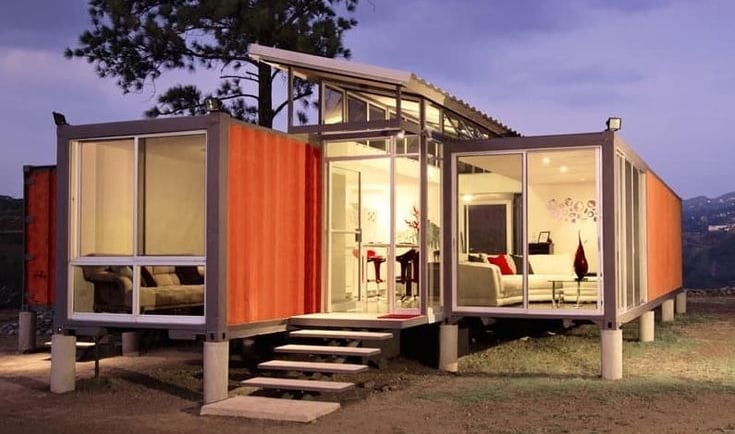

Sustainable Container Architecture: From Logistics to Green Living
From Shipping to Sustainable Architecture
Shipping containers were originally designed in the 1950s to revolutionize global freight transport. Today, more than 170 million containers circulate worldwide, and thousands fall into disuse each year. This accumulation poses an environmental problem but also presents a major architectural opportunity: repurposing containers into residential and commercial modules.
A single 40-foot container equals 30 m² (322 ft²) of living space. Reusing just one of these steel modules prevents the emission of over 3,500 kg of CO₂, since no new steel needs to be produced.
At this point, sustainable container architecture finds its perfect synergy: solving a global waste problem while delivering flexible, affordable housing solutions.
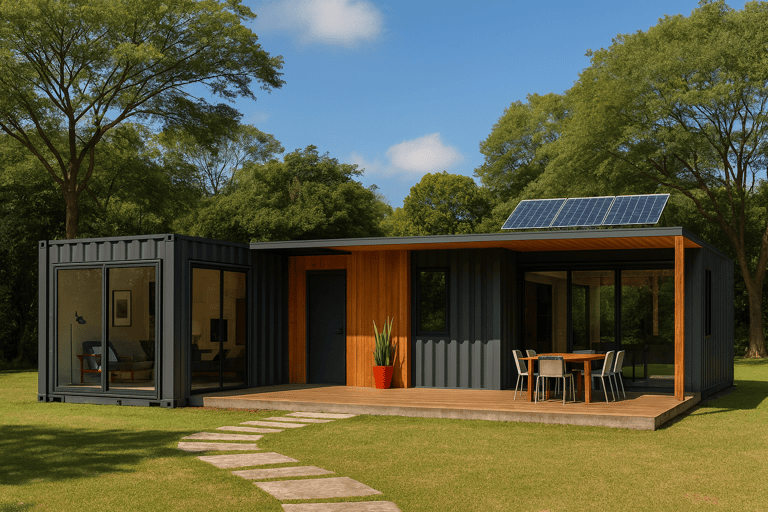

Energy Efficiency in Container-Based Construction
One of the biggest challenges of container homes is transforming steel—an excellent heat conductor—into an energy-efficient, comfortable structure. This is achieved through passive design strategies and advanced technologies.
1. High-Performance Thermal Insulation
Spray polyurethane foam: creates a continuous layer, preventing thermal bridges.
SIP panels (Structural Insulated Panels): combine insulation with structural strength.
Eco-friendly materials like expanded cork or recycled cellulose fibers.
2. Integrated Renewable Energy
Solar panels on flat or sloped roofs.
Small wind turbines for rural projects.
Hybrid systems with battery storage for off-grid living.
3. Bioclimatic Design
Strategic solar orientation for passive heating in winter and shading in summer.
Cross ventilation through strategically placed openings.
Green roofs that provide insulation and reduce the urban heat island effect.
👉 Example: Casa Incubo in Costa Rica, built entirely with containers, operates on 100% solar power, proving that a container home can become a fully self-sufficient residence.
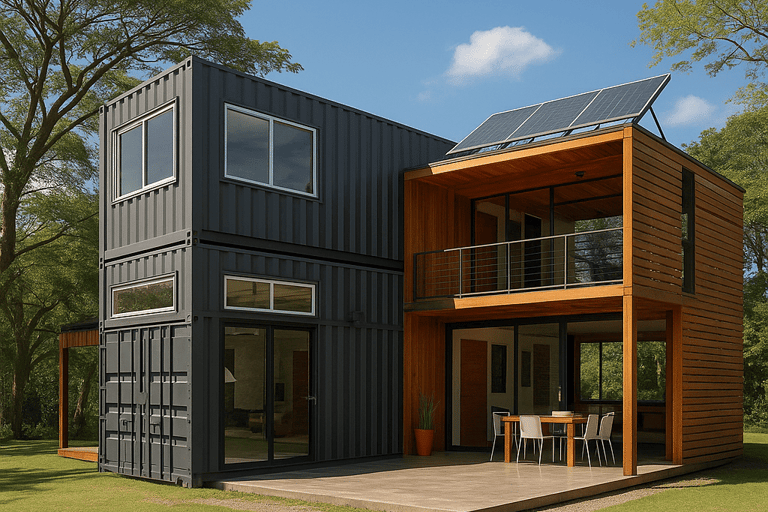

Advanced Container Architecture Design
Far from being just “metal boxes,” containers offer a versatile canvas for cutting-edge architecture that blends functionality, aesthetics, and sustainability.
Industrial Aesthetic with a Modern Twist
Corrugated steel provides a minimalist, industrial look that aligns with contemporary urban design trends. When combined with wood cladding, ventilated facades, or eco-friendly finishes, it creates a balance between modern sophistication and warmth.
Iconic Projects
Keetwonen (Amsterdam, Netherlands) – The world’s largest student housing project made of containers: over 1,000 units with centralized heating and high energy efficiency.
Boxpark (London, UK) – A pop-up retail and dining hub built from stacked containers, generating local jobs and revitalizing urban areas.
Shipping Container House (Colorado, USA) – A luxury residence combining five containers with solar energy systems and radiant floor heating.


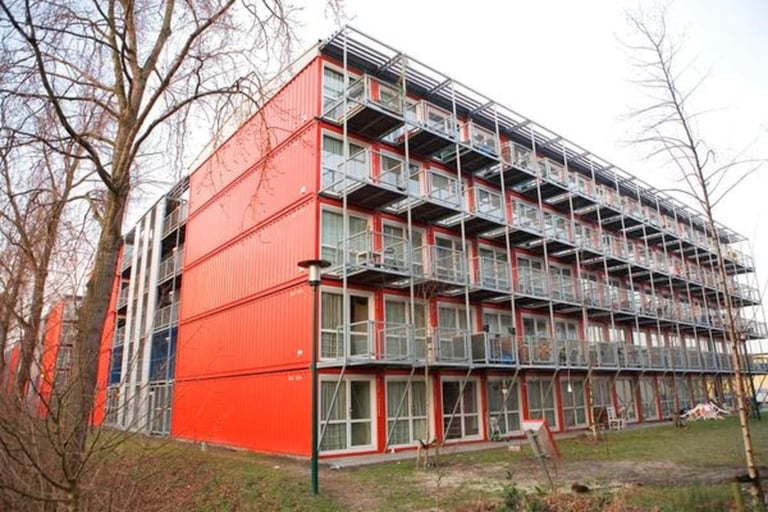

Social and Economic Impact of Container Architecture
1. Emergency Housing
After the 2010 Haiti earthquake, shipping containers were repurposed into temporary shelters, transforming into livable communities within weeks.
2. Affordable Housing for Students & Young Professionals
In cities like London or New York, where real estate prices are skyrocketing, container modules offer affordable, modern housing options.
3. Boosting Local Commerce
Spaces like Boxpark London show how container-based construction can attract tourism, stimulate local economies, and reduce investment times.
Regulatory and Legal Challenges
A major barrier is the lack of clear regulations in many countries.
Spain: Urban planning laws do not always recognize container housing, though some regions have advanced specific regulations.
Chile: After the 2010 earthquake, temporary measures allowed container housing as an emergency solution.
United States: Cities like Austin and Portland are leading the way by promoting incentives for modular, sustainable construction.
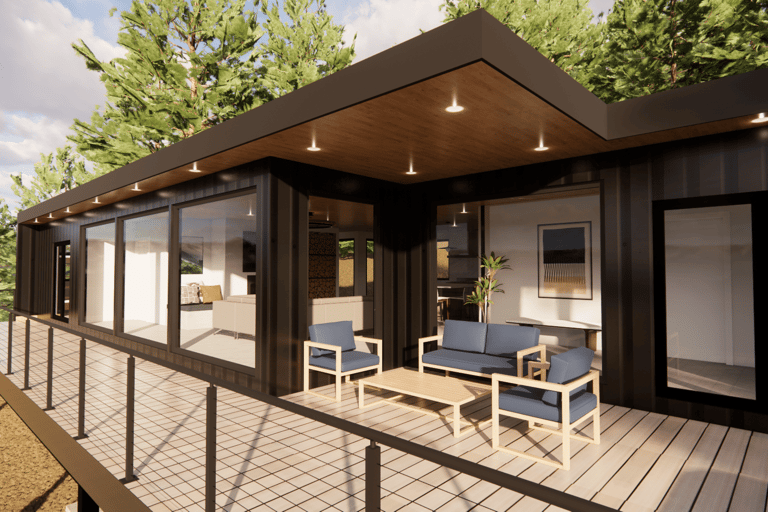

Innovation and the Future: Smart Containers
The future of sustainable container architecture lies in hybrid projects that combine steel modules with eco-friendly materials such as:
Cross-laminated timber (CLT)
Structural bamboo
Low-carbon eco-cements
Additionally, integration with the Internet of Things (IoT) will allow real-time monitoring of energy, water, and waste, closing the loop of sustainability.
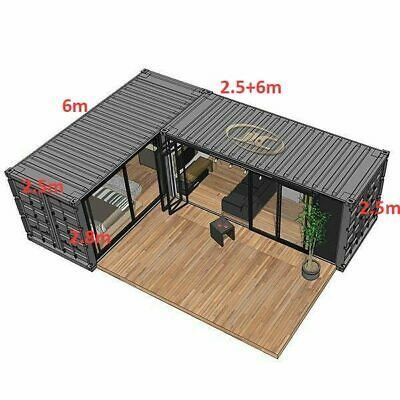

Frequently Asked Questions (FAQs)
1. Can I build a container home on any type of land?
It depends on local regulations. Some municipalities require special permits.
2. Are container homes resistant to earthquakes and hurricanes?
Yes, if properly reinforced and anchored to secure foundations.
3. Is financing available for container housing projects?
Yes, many countries now offer green loans and sustainable housing programs.
4. What kind of maintenance do they require?
Primarily anti-corrosion protection and eco-friendly paint.
5. Can container projects earn green certifications?
Yes, container buildings can qualify for LEED, BREEAM, or EDGE certifications.
Conclusion: The Strategic Role of Sustainable Container Architecture
Sustainable architecture with containers is more than a trend—it’s a transformative movement redefining how we live, build, and interact with cities. By combining circular economy principles, energy efficiency, technological innovation, and social responsibility, it represents a realistic, scalable solution to today’s climate and housing challenges.
In the context of climate crisis and housing shortages, container architecture offers a path toward a more resilient, inclusive, and sustainable urban future.
